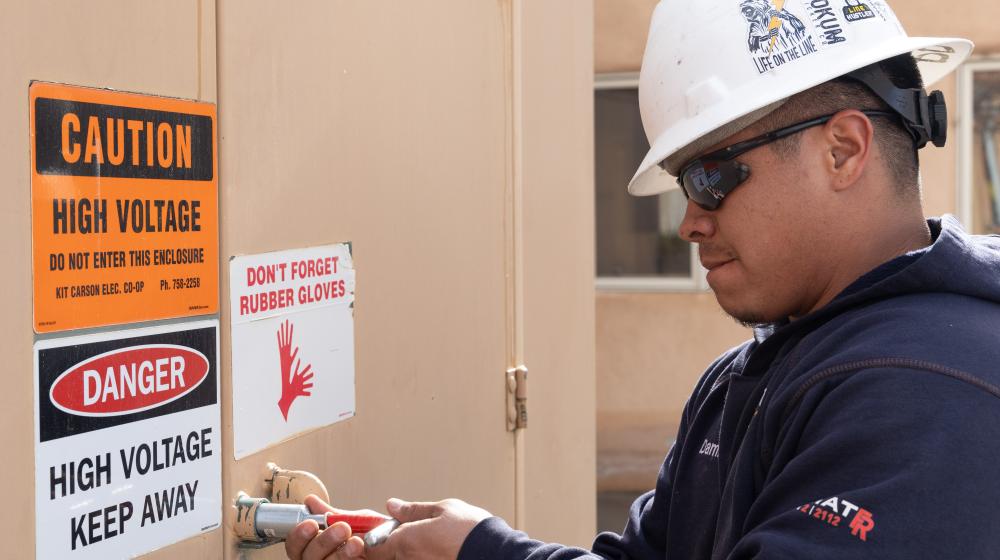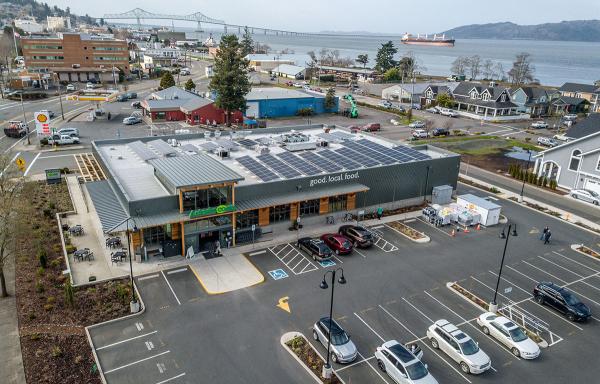
Many of us don’t often think about where the electricity comes from that powers the lights in our home and charges our cell phones. However, residents living in communities powered by Kit Carson Electric Cooperative Inc. can see where their power comes from. It is provided by nearby solar panels.
In 2023, thanks in part to grant and loan funding from USDA Rural Development, the co-op met their goal for 100% daytime solar power.
“We have given back about 18 million dollars since last July in our power costs,” said Luis Reyes, Chief Executive Officer for Kit Carson Electric Cooperative Inc. “And I think the amount isn’t as important as the fact that we give it back. At a time when everything is getting more expensive, and organizations aren’t talking about lowering rates or even stabilizing them, we have taken the attitude of seeing how long we can give our members relief.”
With their daytime solar goal met, the co-op is now moving on to a new goal. They are using funds from a USDA loan to create a fire mitigation plan including three micro grids that they plan to start building this summer.
“About a third of all of our power lines run though federal forest lands, and so one of our biggest issues is forest fires,” said Reyes. “We have been in about a 20-year drought and our exposure in this area for catastrophic events really is forest fires. Whether they are started by lightening, campfires, or downed power lines.”
If power lines need to be deenergized to prevent fire or for any other reasons, the microgrid for that area can provide backup power for critical infrastructure. One way this could help is by providing electricity for pumping water for local community water storage tanks. If a fire breaks out and takes a community off the main grid, the micro grid will allow water pumps to keep working so that water remains available to fight the fire.
Two of the planned grids, one in the Carson National Forest and one on local Pueblo land, will have solar panel, battery combos. The grid in Taos Ski Valley will only have batteries due to the unsuitable location for solar panels. Those batteries will be charged by power from the main grid.
“We want to make sure that the critical infrastructure is available so that if a fire happens, first responders have the initial tools to address it,” said Reyes. “But our whole idea is to mitigate fire risk in the first place.”
Part of the fire mitigation plan also includes putting infrared cameras through the canyon. This will allow them to learn what a baseline normal looks like, and set paraments to look for indicators a fire may spark or has already. If an unsafe situation is detected, the system will deenergize the lines and give officials a chance to determine how to respond. In the meantime, the micro grids would provide backup battery power without interruption to specified connections.
“The important thing is that no one is hurt because of a forest fire,” said Reyes. “Also, if our forest burns it takes away our economy. Later snowmelt and rains also cause damaging flooding. Fires are really devastating, and so we want to do anything we can to mitigate them with our power lines running through the forest.”
Aside from helping prevent forest fires, the micro grids will also help with other critical infrastructure. Local officials will decide what infrastructure will be included for backup power. Hospital services and home medical equipment people use should all benefit from the project.
“We have enhanced the quality of life here whether you are a local or a guest,” Reyes said.” We did that through electricity and phone as the vehicle, but it is really economic development that makes life easier for rural folks and brings some parity to those who live in rural areas.”
The micro-grid project and solar expansion are just two examples of how Kit Carson Electric Cooperative Inc. have used USDA funding to help local residents financially, economically, and improve the safety of those living in and visiting the area they serve.
To learn more about USDA Rural Development loans and grants, visit the programs page.

